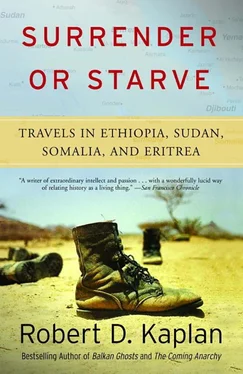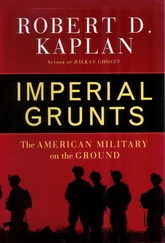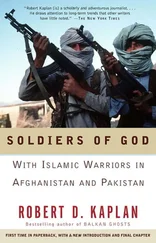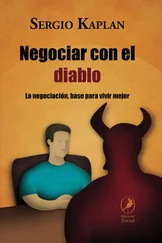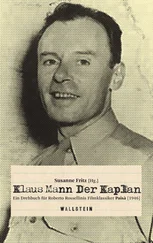Mengistu’s origin is obscure. By one account, he is the son of a night watchman and a palace servant; by another, the illegitimate descendant of a nobleman and his mistress. Mengistu’s complexion is extremely dark, and he is assumed to be part Oromo. During the first years of his rule, his official portrait was touched up to lighten his complexion, so he would appear like an Amhara.
In 1974, Mengistu was a thirty-two-year-old army captain, a graduate of the Holeta Military Academy, which was an institution of no prestige designed for prospective officers whose family backgrounds were neither wealthy nor aristocratic. Like Haile Selassie, Mengistu was short: five feet, five inches. But his reputation was always that of a roughneck; he was constantly getting into fist fights. For eight long years, until the outbreak of the “creeping coup,” Mengistu sat behind a desk in a cramped, dusty office in Harar, while serving as an ordnance officer for the Third Army Division—a typical dead-end job. From this vantage point, noted Rene Lefort in Ethiopie: Revolution Heretique, Mengistu learned how to master the system at its most vicious, petty, and bureaucratic level. Favors, payoffs, and other dirty business regularly crossed his desk. The future author of resettlement and villagization followed Stalin’s dictum well: “Paper will put up with anything that is written on it.”
The barracks disturbances in early 1974 were perfect opportunities for Mengistu’s cunning and thuggishness. Only a true “desperado” could challenge an absolute monarch in a society as violent and secretive as Ethiopia’s. At the Dergue’s founding meeting in late June 1974, Mengistu was chosen immediately as one of its leaders.
The emperor tried to meet the mutineers’ challenge by appointing a new prime minister, who was given a mandate for reform. Meanwhile, Mengistu and the other members of the Dergue worked behind the scenes to unite the faction-ridden armed forces. Haile Selassie was deposed on September 12, 1974; he was driven away from the palace in the back seat of a green Volkswagen and taken to the basement of the Fourth Division headquarters. Two months later, in November, a dispute about the conduct of the war in Eritrea led Mengistu to eliminate his chief rival, General Aman Michael Andom, who was gunned down in his home (see Chapter 2 for details).
In December, students were dispatched to the countryside, ostensibly to revolutionize the masses. But the relocation of the students, many of whom were members of the Ethiopian People’s Revolutionary party (EPRP), allowed the Dergue to consolidate its power in the cities by forming its own left-wing party, the AllEthiopian Socialist Movement, known by its Amharic acronym, MEISON. The Dergue then set MEISON against the EPRP.
On August 28, 1975, the English-language Ethiopian Herald announced that Haile Selassie had died the day before of circulatory failure. However, Mengistu is said to have suffocated the eighty-three-year-old deposed emperor with a pillow.
A few weeks later, the Dergue shot contingents of EPRP marchers down in the street. This, as Mengistu no doubt expected, only whetted MEISON’s appetite. By early 1976, MEISON cadres were conducting house-to-house searches, killing anyone suspected of belonging to the EPRP.
Within the Dergue, Mengistu continued apace to eliminate rivals. In July 1976, the members of a faction that supported a peaceful solution to the war in Eritrea all were executed. Undeterred, another group, led by General Teferi Banti—this time calling for democratic reforms—demanded that Mengistu’s power be circumscribed. Mengistu, uncharacteristically, submitted. A few months went by. Then, on February 2, 1977, General Banti and his colleagues were murdered by Mengistu inside the palace. By now, having destroyed the EPRP with the help of MEISON, the Dergue was turning against MEISON itself.
The Russians were very impressed with Mengistu’s performance thus far, and a group of East German security police were dispatched to Addis Ababa to advise the emergent Ethiopian leader on what to do next. What followed was the Red Terror, which began in May 1977. On May Day eve, soldiers that had been brought into town by convoy machine-gunned to death hundreds of demonstrating students, including many children. During the coming months, dozens of new bodies would turn up on the street every morning; most of them were teenagers who were vaguely connected with revolutionary politics at a time when there was no right side to be on. The victims’ families had to pay a fee to the government in order to get the bodies back for burial.
The revolution ground to a halt the next year. The death toll was estimated to be thirty thousand, not including tens of thousands of battlefield deaths. (In Tigre, an insurgency had broken out against the new military rulers, and in Eritrea, Mengistu’s uncompromising stance toward the guerrillas resulted in intensified fighting.) Of the 120 members of the original Dergue, only a small fraction were still alive. Compared to the hundreds of political prisoners in jail in Haile Selassie’s day, tens of thousands were being held in 1978. Torture reportedly was widespread.
The Darwinian process of revolution had proved efficient and had elevated Mengistu in a very short time from the very bottom to the very top, where he both orchestrated and survived four years of the most violent internecine struggles imaginable. Constantly underestimated by his rivals, he never once miscalculated. The standard of treachery he was judged by, given the paranoia engendered by the revolution, was much higher than that ever applied to Haile Selassie. A Marxist revolution once again had brought an outdated despotism up to a modern standard, with a programmed killer installed in the emperor’s palace.
Mengistu belonged to the most lethal class of dictator: the kind not distracted by greed. As with Hitler, Stalin, and Pol Pot, Mengistu was not personally corrupt, and corruption never has been a key element in his style of rule. Apologists for the Ethiopian regime—and in Europe, especially, there are many—point out that it is more honest and efficient than the previous one. This is certainly true. Mengistu has none of the all-too-human foibles of other Third World rulers, Ferdinand and Imelda Marcos, for example, whose evil was of a lesser variety, one to which the U.S. public could relate. (Is there a more tangible symbol of conspicuous, nouveau riche, middle-class consumption than Mrs. Marcos’s fetish for shoes?) This is one reason why even during the height of the famine, the media never bothered much with Mengistu. As a personality he was too austere and his evil too remote for mass audience appeal.
Whatever his bloodlines, Mengistu had the ascetic discipline required to keep an empire, torn by several wars, from splitting apart. He has proven to be a more aggressive imperialist than Haile Selassie was, and in this endeavor, the USSR has been a better ally for Mengistu than the United States was for the emperor. Massive Soviet arms shipments turned the tide against guerrillas in Eritrea and the Somali army in the Ogaden desert. In the densely populated Ethiopian countryside, Marxism was more efficient than feudalism in controlling the lives and movements of the peasants, not all of whom were loyal to the regime or to the Amhara cause. In place of landlords, whose interests were similar, but not always identical, to those of the emperor, the government has been able to rule more efficiently through its own peasant associations. Eastern bloc advisers influenced the 1979 proclamation on collectivization; the proclamation put additional emphasis on state farms, which were (and are) useful as bases and listening posts for the government because they were not manned by local people. Between 1977 and 1984, state farms expanded threefold in area. Even though production on state farms continued to fall, government plans called for doubling of the state farm sector according to Allen Hoben in the January 21, 1985, issue of The New Republic.
Читать дальше
